From Monthly Film Bulletin, July 1976 (Vol. 43, No. 510). I’ve made a couple of corrections and added several basic credits, visible now at the end of my VHS copy but not accessible to me back in 1976. (I should add that the pitches made by the coproducer to potential sponsors aren’t on the VHS version.) Thanks to Ehsan Khoshbakht for some help with the illustrations.–- J.R.

After Hours
U.S.A., 1961
Director: Shepard Traube
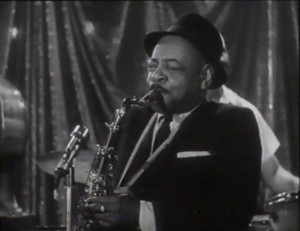
Dist–TCB. p–Shepard Traube, Arthur Small. sc–Arthur Small. p. sup– George Goodman. ph–Arthur Ornitz. ed–Morton Fallick. sd–Robert Lessner, Frank J. Gaily. m/songs—“Lover Man” by Jimmy Davis, Roger “Ram” Ramirez, Jimmy Sherman, “Sunday” by Chester Conn, Ned Miller, Bennie Krueger, Jule Styne, “Just You, Just Me” by Jesse Greer, Raymond Klages, “Taking a Chance on Love” by Vernon Duke, John Latouche, Ted Fetter, performed by Coleman Hawkins (tenor sax), Roy Eldridge (trumpet, vocals), Johnny Guarnieri (piano), Barry Galbraith (guitar), Milt Hinton (bass), Cozy Cole (drums), Carol Stevens (vocals). l.p— Meredith Gaynes (Cigarette Girl), Albert Minns (Head Waiter), Leon James (Doorman), Richard Blackmarr (Bartender). narrator— William B. Williams. 967 ft. 27 mins. (16 mm.).
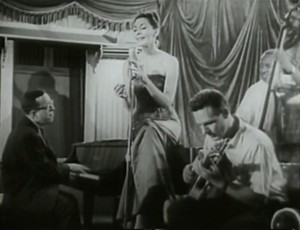
A TV pilot which failed to attract sponsors, After Hours carries all the poignance of a noble lost cause. Read more
From Monthly Film Bulletin, September 1975, Vol. 42, No. 500. — J.R.

W.W. and the Dixie Dancekings
U.S.A..1975
Director: John G. Avildsen

Cert—A. dist–Fox-Rank. p.c–20th Century-Fox. exec. p–Steve
Shagan. p–Stanley S. Canter. p. manager–William C. Davidson. asst. d
–Ric Rondell, Jerry Grandey. sc–Thomas Rickman. ph–Jim Crabe.
col–TVC; prints by DeLuxe. ed–Richard Halsey, Robbe Roberts. a.d—
Larry Paull. set dec–JimBerkey. sp. effects–Milt Rice. m–Dave Grusin.
songs–“Hound Dog” by Jerry Leiber, Mike Stoller, sung by Elvis
Presley; “Goodnight, Sweetheart, Goodnight” by Calvin Carter, James
Hudson; “Johnny B. Goode” by Chuck Berry; “Bye Bye Love” by
Felice Bryant, Boudleaux Bryant; “I’m Walkin’” by Antoine “Fats”
Domino, Dave Bartholomew; “Blue Suede Shoes” by Carl Lee Perkins;
“Mama Was a Convict” by Tom Rickman, Tim Mclntire; “A Friend” by
Jerry Reed; “Dirty Car Blues” (traditional), performed by Furry Lewis.
cost–Dick LaMotte. titles–PacificTitle. sd. rec–Bud Alper. sd. re-rec—
Don Bassman. stunt co-ordinator–Hal Needham. l.p–Bert Reynolds
(W.W. Read more
What an onslaught of deaths that week in late March, 2021: Morris Dickstein, Larry McMurtry, Bertrand Tavernier, George Segal….The latter prompted this reposting. From Stop Smiling No. 35 (its gambling issue, guest edited by Annie Nocenti), June 2008. — J.R.

“Trusting to luck means listening to voices,” Jean-Luc Godard reportedly said at some point in the mid-1960s. This has always struck me as being one of his more obscure aphorisms, and one that even seems to border on the mystical. Yet the minute one starts to apply it to Robert Altman’s California Split, released in 1974 —- a free-form comedy about the friendship that develops and then plays itself out between two compulsive gamblers, Charlie (Elliott Gould) and Bill (George Segal), and the first movie ever to use an eight-track mixer — it starts to make some weird kind of sense.
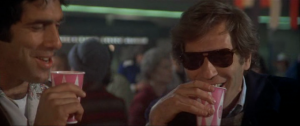
What’s an eight-track mixer? According to the maestro of overlapping dialogue himself, speaking in David Thompson’s Altman on Altman (Faber and Faber, 2006), this is a system known as Lion’s Gate 8-Tracks developed by Jim Webb, and it grew directly out of Altman’s ongoing efforts to make on-screen dialogue sound more real. Sound mixers would frequently complain that some actors wouldn’t speak loudly enough and Altman would counter that this was a recording problem, not a performance problem involving the actors’ deliveries. Read more
From Monthly Film Bulletin, February 1975 (Vol. 42, No. 493). –- J.R.
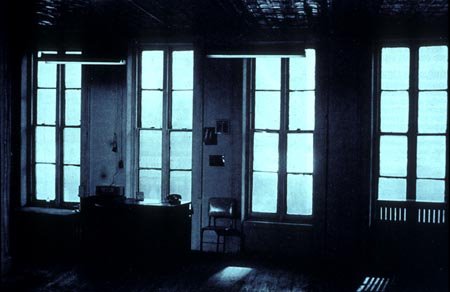
Wavelength
Canada, 1967
Director: Michael Snow
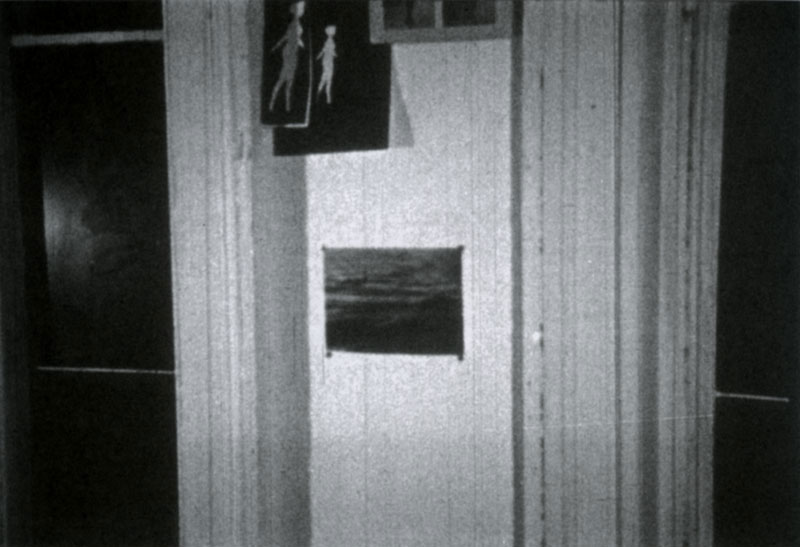
Dist–London Film-makers Co–op. conceived and executed by—Michael Snow. In color. ed–Michael Snow. song—“Strawberry Fields Forever” by John Lennon, Paul McCartney. performed by—The Beatles. sd–_Michael Snow. l.p–Hollis Frampton (Man Who Dies), Amy Taubin (Woman on Phone). 1,538 ft. 45 min. (16 mm.).
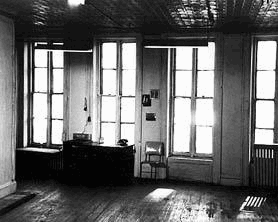
A camera zooms across the length of an 80-foot urban loft, beginning from a distance approximating the camera’s fixed. Position — where most of the room is visible — and proceeding towards the four vertical double-windows, three intervening sections of wall space, desk, chairs and radiator on the opposite side, accompanied on the soundtrack by a sine wave gradually progressing from its lowest note (50 cycles per second) to its highest (12,000 cycles per second). The zoom mainly proceeds through a series of periodic jerks, between occasional shot changes, while the images pass through a variety of colored filters, film stocks, and qualities and degrees of processing (positive and negative)and light exposure (controlled by the camera, four light fixtures on the ceiling, and the time of day). It is interrupted four times by a visible human event, and during each of these the sine wave is overlaid with synchronized sound: (1) A woman and two men enter the room, and the former directs the latter to set a bookshelf down against the wall on screen left; all three leave. Read more










